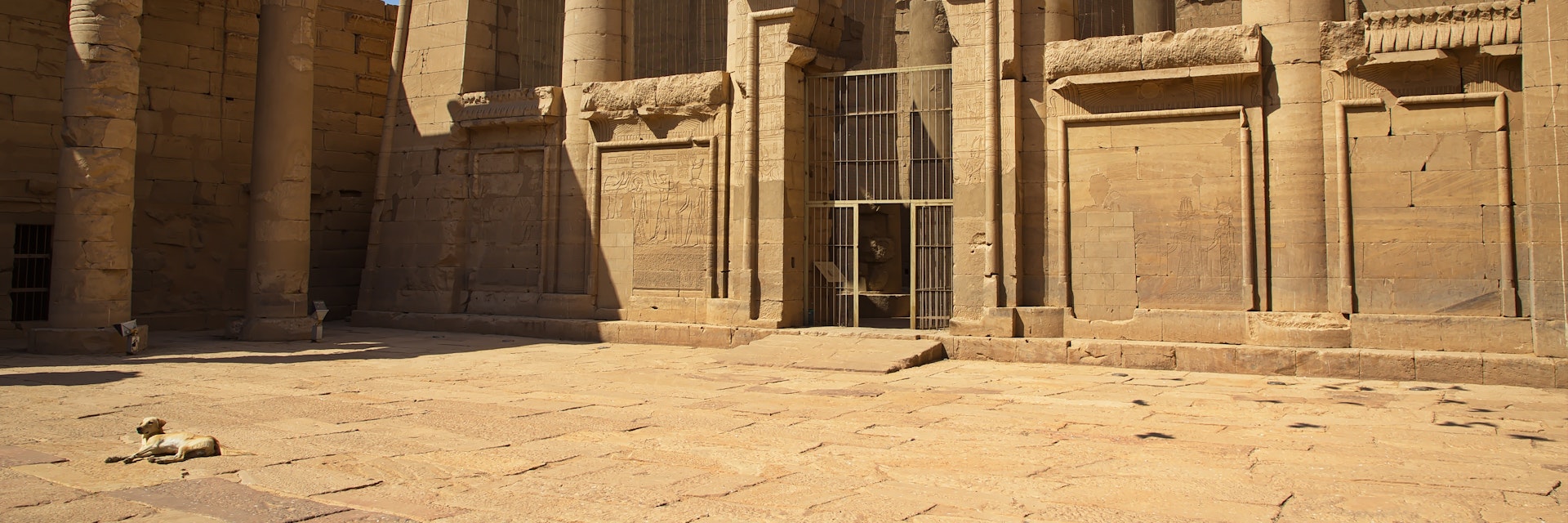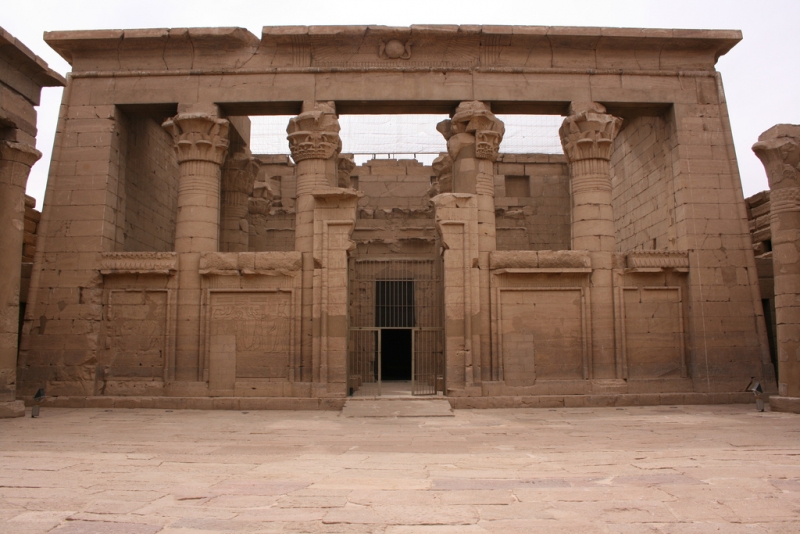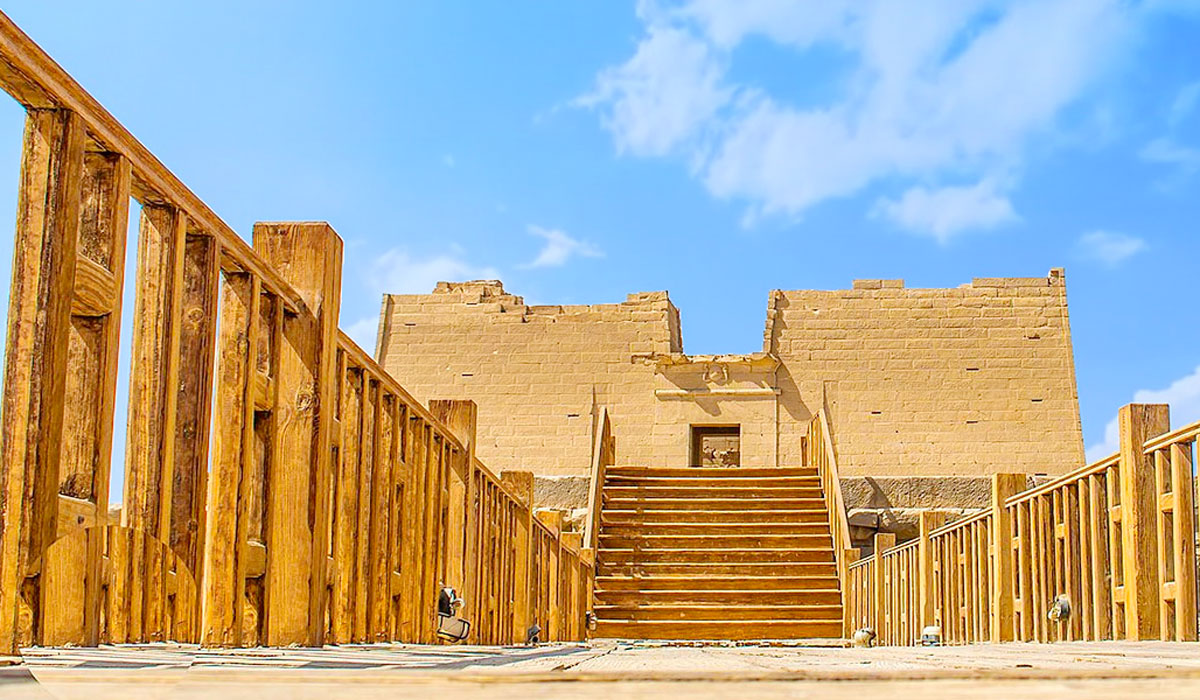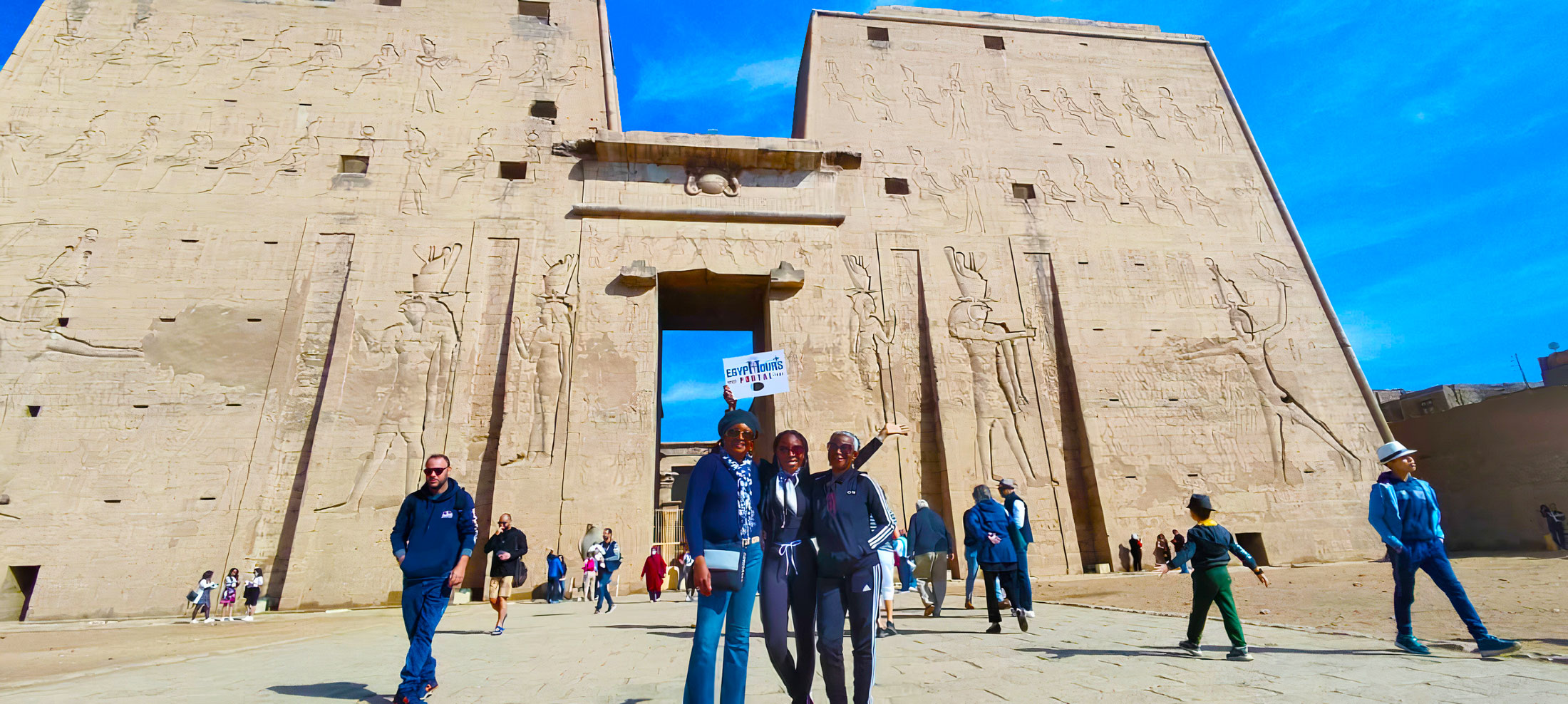Kalabsha Temple: Journey into Ancient Egyptian Mysteries

Introduction to Kalabsha Temple
Imagine stepping back to ancient Egypt, where towering temples stood as symbols of power and devotion. One such temple that invites you to embark on a journey into the mysteries of the past is Kalabsha Temple.
Overview of Kalabsha Temple and its historical significance
Kalabsha Temple, also known as the Temple of Mandulis, was built during the Roman era in the 1st century BC. Dedicated to the Nubian sun god Mandulis, this temple is a testament to the fusion of Egyptian and Roman architectural styles.
The temple complex is a sight, with massive sandstone walls adorned with intricate carvings and hieroglyphics. As you explore its halls and chambers, you'll witness scenes from ancient Egyptian mythology, depictions of pharaohs, and the awe-inspiring grandeur that characterized the temples of that era.
Beyond its architectural magnificence, Kalabsha Temple holds historical significance as it was relocated from its original location on the island of Kalabsha to its current spot on the banks of Lake Nasser. This ambitious relocation was due to the construction of the High Dam, ensuring that this precious piece of ancient history was preserved for future generations to appreciate.
Location and accessibility of Kalabsha Temple
Located in southern Egypt, near Aswan, Kalabsha Temple sits on the western shore of the vast Lake Nasser. To reach the temple, you can take a short boat ride from Aswan, allowing you to enjoy the scenic beauty of the Nile River.
Thanks to its accessibility, visiting Kalabsha Temple is a delightful addition to any Egypt itinerary. While the temple is relatively lesser-known than other ancient Egyptian sites, its tranquillity and mystique make it a hidden gem waiting to be explored.
So, if you're craving a journey into ancient Egyptian mysteries, include Kalabsha Temple in your travel plans. Prepare to be captivated by its rich history, architectural marvels, and the spiritual aura within its walls.

History and Architecture of Kalabsha Temple
Ancient Egyptian beliefs and gods associated with Kalabsha Temple
When you visit the Kalabsha Temple, you embark on a journey into the mysteries and beliefs of ancient Egypt. This temple is dedicated to the ancient Egyptian god Mandulis, who was associated with the sun and often depicted as a man with a sun disk on his head. Worshipped primarily during the Ptolemaic and Roman periods, Mandulis was believed to bring blessings, protection, and healing to the people.
In addition to Mandulis, other gods were also worshipped at Kalabsha Temple. One such deity was Isis, the goddess of magic and the wife of Osiris. She was seen as a protector of the dead and a giver of life, and her presence at the temple further emphasizes its importance in ancient Egyptian religious practices.
Structural design and notable architectural features
The Kalabsha Temple, located on the western bank of the Nile River in southern Egypt, showcases impressive architectural features that have withstood the test of time. The temple was originally built in the 30th dynasty of ancient Egypt and was later relocated to its current location when the Aswan High Dam was constructed.
One of the most notable architectural features of Kalabsha Temple is its towering pylon, adorned with intricate carvings depicting scenes from ancient Egyptian mythology. Walking through the temple, you will also come across beautifully preserved columns with hieroglyphics, courtyards, and a hypostyle hall with stunning reliefs.
The temple's significance extends beyond its religious and architectural elements. It serves as a testament to the skill and craftsmanship of the ancient Egyptians in constructing monumental structures that have stood the test of time.
So, when you visit Kalabsha Temple, prepare to be transported back in time to an era of ancient rituals, mysterious beliefs, and awe-inspiring architectural wonders. Take a moment to marvel at the intricate carvings, reflect on the significance of the gods worshipped here, and immerse yourself in ancient Egypt's rich history and cultural heritage.

Exploration of Kalabsha Temple
Welcome to the stunning and mysterious world of Kalabsha Temple. As you visit one of the most well-preserved ancient Egyptian temples in Nubia, prepare for a journey back in time.
Exterior and interior areas of Kalabsha Temple
Situated on the western bank of the majestic Lake Nasser, the Kalabsha Temple complex boasts impressive architecture and intricate details that will leave you in awe. As you approach the temple, you'll be struck by its massive sandstone pylons and towering columns. The temple's exterior features captivating reliefs depicting pharaohs and gods, showcasing the superb craftsmanship of ancient Egyptian artisans.
Step inside the temple, and you'll discover a series of chambers and halls transporting you to another era. Marvel at the grandeur of the hypostyle hall, with its rows of gracefully carved columns and beautifully painted ceilings. Explore the sanctuary, where offerings were made to the gods. The interior walls are adorned with vibrant frescoes, illustrating mythological scenes and religious rituals.
Wall carvings and hieroglyphics within the temple complex
One of the highlights of your visit will undoubtedly be the breathtaking wall carvings and hieroglyphics found throughout the temple complex. These intricate carvings provide valuable insights into ancient Egyptians' beliefs, history, and rituals. Marvel at the detailed depictions of pharaohs, gods, and religious ceremonies, each telling a story that has withstood the test of time.
As you explore the chambers and corridors, you'll encounter scenes of daily life, famous battles, and the eternal bond between pharaohs and deities. Take a moment to decipher the hieroglyphics, a writing system unique to ancient Egypt, and uncover the hidden messages left behind by those who built the temple.
In conclusion, a visit to Kalabsha Temple is a captivating journey into the mysteries of ancient Egypt. Immerse yourself in the awe-inspiring architecture, intricate carvings, and fascinating hieroglyphics that tell stories of a civilization that thrived thousands of years ago. Whether you're a history enthusiast or appreciate incredible craftsmanship, this temple is a must-see destination.
Kalabsha Temple's Symbolism and Mysteries
Interpretation of symbolic elements found in the temple's artwork
The ancient and mesmerizing Kalabsha Temple, located on the banks of the Nile River in Egypt, is renowned for its rich symbolism and intricate artwork. The temple's design and decorations reveal fascinating insights into the beliefs and culture of the ancient Egyptians. Here, we will explore some of the symbolic elements found in the temple's artwork:
-
Solar Symbolism: The sun plays a significant role in Egyptian mythology, representing life, power, and rebirth. In Kalabsha Temple, the sun disc (Aten) is prominently depicted, symbolizing the sun god, Ra. The presence of this symbol throughout the temple highlights the importance of solar worship in ancient Egypt.
-
Animal Symbolism: Animals were deeply revered in ancient Egyptian culture and were often associated with deities or specific qualities. In Kalabsha Temple, various animal images can be seen, such as the lion representing strength, the falcon representing the sky god Horus, and the ram symbolizing the god Amun. These animal depictions serve as reminders of the divine presence and the qualities they embody.
-
Hieroglyphs and Inscriptions: The walls of Kalabsha Temple are adorned with intricate hieroglyphs and inscriptions, which convey religious and historical narratives. These writings reveal details about the temple's construction, offerings made to the gods, and important events in the lives of pharaohs. Deciphering these inscriptions offers valuable insights into the beliefs and practices of the ancient Egyptians.
Unraveling the mysteries surrounding Kalabsha Temple
Despite its grandeur and historical significance, Kalabsha Temple remains shrouded in mystery. Numerous questions surround its construction, purpose, and the people who worshipped within its walls. While some mysteries may never be fully answered, here are a few intriguing aspects that continue to puzzle historians and archaeologists:
-
Builders and origin: The exact builders of Kalabsha Temple are still debated among experts. Some attribute its construction to the Romans, while others suggest it dates back to the reign of Ramses II. Uncovering the true origin of the temple is an ongoing quest for researchers.
-
Relocation: Kalabsha Temple was originally located at the site of Talmis, a region that would have been flooded due to the construction of the Aswan High Dam. In a remarkable feat of preservation, the temple was dismantled and relocated to its current location in the 1960s. The logistics and motivations behind this monumental task remain a mystery.
-
Lost treasures: With time, many ancient Egyptian temples were plundered, and valuable treasures were looted. While efforts have been made to protect and preserve Kalabsha Temple, it is uncertain whether any hidden treasures or artefacts remain undiscovered within its walls.
Kalabsha Temple continues to captivate visitors with its symbolism and enigmatic history, promising to unveil new insights as archaeological discoveries and research progress. It is a testament to the enduring fascination with ancient Egyptian civilization and the quest to unravel its mysteries.
Preservation Efforts and Restoration Projects
Efforts to preserve and protect Kalabsha Temple
When you step into the magnificent Kalabsha Temple, you are immediately transported back to the ancient world of the Egyptians. It is a mesmerizing journey filled with fascinating mysteries and unparalleled beauty. Without the dedicated efforts of preservation and protection, this temple could have been lost to the passage of time.
The Egyptian Ministry of Antiquities and various international organizations have undertaken extensive measures to safeguard Kalabsha Temple. These efforts include regular inspections, maintenance, and restoration projects. The temple’s location on the shore of Lake Nasser presents a unique challenge due to the water's erosive effects. To counteract this, drainage systems and protective barriers have been implemented to mitigate the impact of rising waters and fluctuations in humidity.
In addition to protecting the physical structure, measures have been taken to safeguard the temple's invaluable artwork and inscriptions. Special coatings, humidity control, and lighting techniques have been employed to preserve the stunning wall paintings, hieroglyphics, and sculptures that adorn the temple's interior.
Significance of restoration projects in maintaining its historical integrity
Restoration projects play a crucial role in maintaining the historical integrity of Kalabsha Temple. Over the centuries, weathering, natural disasters, and human activities have affected the temple's original construction. Each restoration project returns the temple closer to its original grandeur, allowing visitors like yourself to experience it as it once was.
Skilled teams of archaeologists, architects, conservators, and engineers work tirelessly to ensure the restoration is done with utmost care and respect for the temple's history. The use of traditional materials and techniques, as well as the collaboration with local communities, further enhances the authenticity of the restoration process.
By investing in these restoration efforts, the importance and significance of Kalabsha Temple as a cultural heritage site are acknowledged and preserved for future generations. It allows visitors, historians, and archaeologists to delve deeper into the secrets of ancient Egypt and gain a better understanding of this remarkable civilisation's religious, artistic, and architectural achievements.
Visiting Kalabsha Temple is not just a journey into ancient Egyptian mysteries but also a testament to the dedication and passion of those who strive to protect our shared human history.

Visiting Kalabsha Temple
Guided tours and visitor information
Are you ready to embark on a journey into the mysteries of ancient Egypt? Kalabsha Temple, located near Aswan, is waiting to be explored. Here's everything you need to know for a memorable visit:
-
Getting there: Kalabsha Temple is easily accessible by road or by taking a relaxing felucca boat ride down the Nile River from Aswan.
-
Operating hours: The temple is open daily from 8:00 a.m. to 4:00 p.m.. It's best to arrive early to avoid crowds and make the most of your visit.
-
Guided tours: To truly immerse yourself in the history and significance of Kalabsha Temple, consider joining a guided tour. Knowledgeable guides will provide insights and stories behind the temple's ancient hieroglyphs, statues, and architecture.
-
Ticket pricing: Admission fees for foreigners are affordable and include access to the temple and surrounding grounds. Student discounts are available with a valid student ID.
-
Exploring the temple: Once inside, take your time to marvel at the remarkable preserved artwork and carvings. The temple's grand entrance, intricate columns, and stunning sanctuary will transport you back in time.
Tips for a memorable visit to Kalabsha Temple
Make the most of your visit to Kalabsha Temple with these helpful tips:
-
Bring essentials: As you explore the temple grounds, bring sunscreen, a hat, and comfortable footwear, as the area can get hot and sunny.
-
Respect the site: To preserve the temple for future generations, it's important to respect and follow any signs, instructions, or guidelines the authorities provide. Avoid touching or damaging the ancient artefacts.
-
Capture the moments: Don't forget your camera or smartphone to capture the beauty and majesty of the temple. Take photos of the intricate details, stunning architecture, and panoramic views of the surrounding landscape.
-
Uncover the history: Before your visit, read up on the history of Kalabsha Temple. Learning about its significance and the gods worshipped there will enhance your experience and appreciation of the site.
-
Take your time: Allow yourself ample time to explore and soak in the atmosphere of Kalabsha Temple. Take breaks to sit and reflect, allowing the ancient energy of the temple to envelop you.
Kalabsha Temple offers a remarkable journey into ancient Egyptian history and spirituality. With proper planning and a sense of awe, your visit will be an unforgettable experience.
